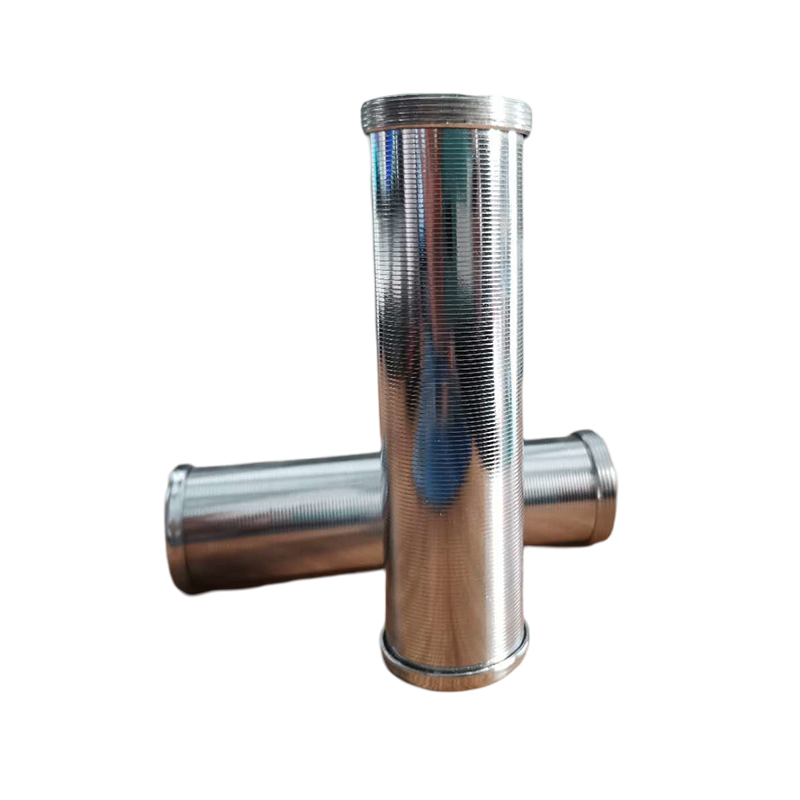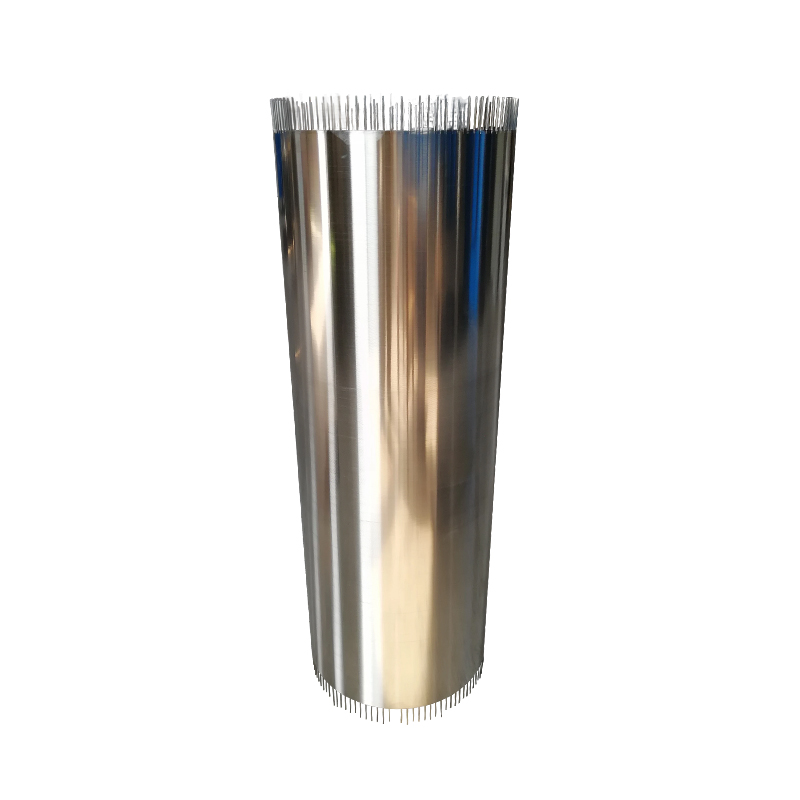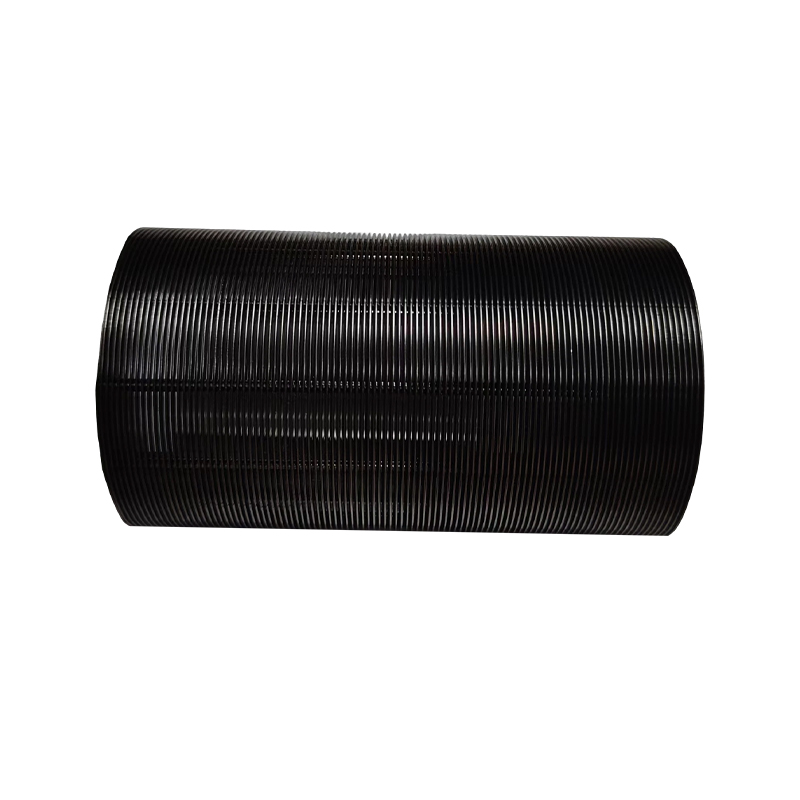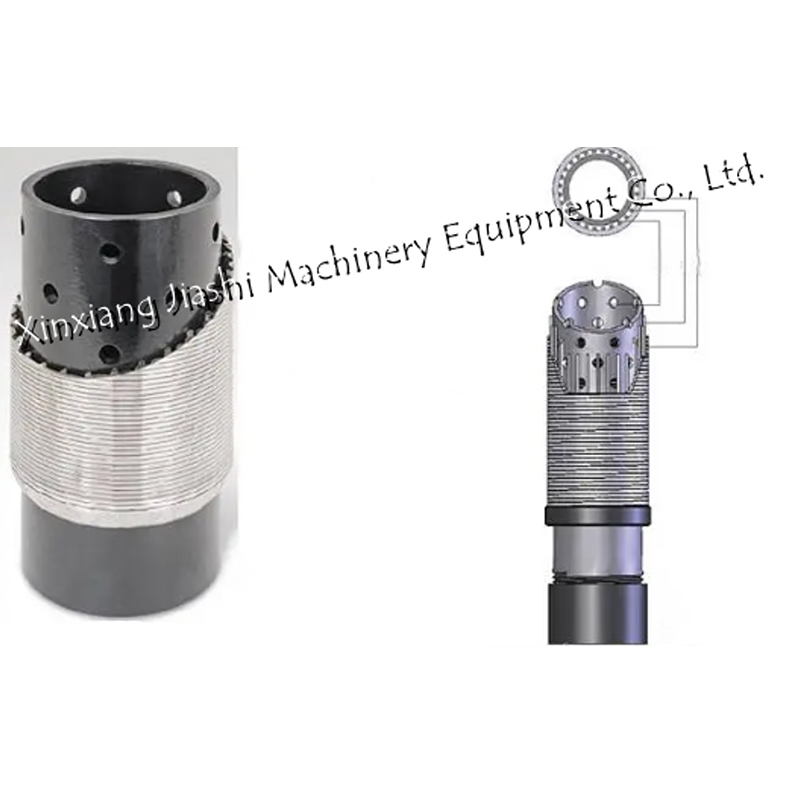How does the V-shaped cross-section design of the positive winding screen achieve its "self-cleaning" anti-clogging effect?
Release Time : 2025-10-02
In numerous industrial fields, such as water treatment, oil drilling, mine screening, and seawater desalination, screens, as core filtration components, have long faced challenges such as particulate accumulation, clogged slits, and frequent cleaning. Due to structural limitations, traditional screens are prone to rapid clogging under high solids loading or high flow rates, severely impacting system efficiency. However, the positive winding screen, with its unique V-shaped cross-section, not only significantly improves filtration performance but also achieves a "self-cleaning" anti-clogging effect, making it a leader in modern filtration technology.
1. Structural Principle of the V-Shaped Cross-Section: From Geometric Design to Fluid Optimization
The core feature of the positive winding screen lies in its V-shaped cross-section, formed by longitudinal support rods and transverse contours. This design is more than a simple change in shape; it is based on in-depth optimization of fluid dynamics and material mechanics. The V-shaped cross-section opens outward, forming a "wedge-shaped gap" that gradually narrows from the outside inward. When a fluid containing solid particles flows from outside into the screen, it first encounters the wide end of the V-shaped structure and is then naturally guided and compressed as it enters the gap. The continuity of the V-shaped structure prevents particles from lingering at the gap entrance. Even if a small particle becomes lodged, it is "pushed" or "slides out" by the erosion and pressure fluctuations of the water flow, thus avoiding the "stuck" phenomenon common with traditional straight-slot screens.
2. Anti-clogging Mechanism at Intersections: Every Node is an "Anti-clogging Checkpoint"
The intersection of each V-shaped section and the longitudinal support rod in the positive winding screen is key to its anti-clogging design. These intersections are precision welded or integrally molded, ensuring a stable structure while avoiding burrs, dents, and dead corners. More importantly, the slope of the V-shaped section means that as particles approach the gap, they are subjected to the combined forces of fluid dynamics and gravity, tending to slide down the slope rather than embedding vertically into the gap. This "slip effect" significantly reduces the probability of particle entrapment. Experiments have shown that, under the same operating conditions, the clogging rate of positive winding screens is far lower than that of traditional screens. This advantage is particularly evident when handling impurities containing sand, mud, or fibers.
3. Continuous Slits and Large Opening Area: Reduced Flow Velocity, Improved Flow Capacity
Another major advantage of positive winding screens is their continuous slit design, which creates a larger effective opening area. Compared to the discrete holes in traditional perforated screens, the slits in positive winding screens are distributed continuously along a circumference or plane, significantly increasing the water flow area. The larger opening area means that at the same flow rate, the fluid passes through the screen at a lower velocity, reducing the impact force on the screen and the penetration pressure of particles. This lower flow rate not only reduces the risk of clogging but also reduces mechanical wear on the screen, extending its service life. Furthermore, this design enhances the screen's "flexibility"—meaning it remains structurally stable and resists deformation under pressure fluctuations, further ensuring the long-term filtration accuracy.
4. Stable Filtration Under High Pressure: Effectively Blocks Sand Intrusion
In high-pressure filtration environments, such as deep well water extraction or oil-sands separation, traditional screens often experience pressure differentials, forcing fine sand into the gaps, leading to internal blockage or screen damage. The V-shaped structure of the positive winding screen effectively resists this pressure intrusion. Because the gaps are wide on the outside and narrow on the inside, sand particles, while easily accessible from the outside, struggle to penetrate the narrow internal channels. Even if some particles do enter, they are carried out by the subsequent water flow due to the lack of internal space, creating a reverse barrier effect: "in, but not out." This mechanism not only protects the internal structure of the screen but also ensures the long-term stability of the filtration system.
The positive winding screen's "self-cleaning" feature isn't magic; it's the result of a perfect combination of V-shaped cross-section design, continuous gap structure, material strength, and fluid dynamics. It optimizes the fluid path through geometry and utilizes physical mechanisms to automatically clear blockages, truly achieving "design instead of maintenance."
1. Structural Principle of the V-Shaped Cross-Section: From Geometric Design to Fluid Optimization
The core feature of the positive winding screen lies in its V-shaped cross-section, formed by longitudinal support rods and transverse contours. This design is more than a simple change in shape; it is based on in-depth optimization of fluid dynamics and material mechanics. The V-shaped cross-section opens outward, forming a "wedge-shaped gap" that gradually narrows from the outside inward. When a fluid containing solid particles flows from outside into the screen, it first encounters the wide end of the V-shaped structure and is then naturally guided and compressed as it enters the gap. The continuity of the V-shaped structure prevents particles from lingering at the gap entrance. Even if a small particle becomes lodged, it is "pushed" or "slides out" by the erosion and pressure fluctuations of the water flow, thus avoiding the "stuck" phenomenon common with traditional straight-slot screens.
2. Anti-clogging Mechanism at Intersections: Every Node is an "Anti-clogging Checkpoint"
The intersection of each V-shaped section and the longitudinal support rod in the positive winding screen is key to its anti-clogging design. These intersections are precision welded or integrally molded, ensuring a stable structure while avoiding burrs, dents, and dead corners. More importantly, the slope of the V-shaped section means that as particles approach the gap, they are subjected to the combined forces of fluid dynamics and gravity, tending to slide down the slope rather than embedding vertically into the gap. This "slip effect" significantly reduces the probability of particle entrapment. Experiments have shown that, under the same operating conditions, the clogging rate of positive winding screens is far lower than that of traditional screens. This advantage is particularly evident when handling impurities containing sand, mud, or fibers.
3. Continuous Slits and Large Opening Area: Reduced Flow Velocity, Improved Flow Capacity
Another major advantage of positive winding screens is their continuous slit design, which creates a larger effective opening area. Compared to the discrete holes in traditional perforated screens, the slits in positive winding screens are distributed continuously along a circumference or plane, significantly increasing the water flow area. The larger opening area means that at the same flow rate, the fluid passes through the screen at a lower velocity, reducing the impact force on the screen and the penetration pressure of particles. This lower flow rate not only reduces the risk of clogging but also reduces mechanical wear on the screen, extending its service life. Furthermore, this design enhances the screen's "flexibility"—meaning it remains structurally stable and resists deformation under pressure fluctuations, further ensuring the long-term filtration accuracy.
4. Stable Filtration Under High Pressure: Effectively Blocks Sand Intrusion
In high-pressure filtration environments, such as deep well water extraction or oil-sands separation, traditional screens often experience pressure differentials, forcing fine sand into the gaps, leading to internal blockage or screen damage. The V-shaped structure of the positive winding screen effectively resists this pressure intrusion. Because the gaps are wide on the outside and narrow on the inside, sand particles, while easily accessible from the outside, struggle to penetrate the narrow internal channels. Even if some particles do enter, they are carried out by the subsequent water flow due to the lack of internal space, creating a reverse barrier effect: "in, but not out." This mechanism not only protects the internal structure of the screen but also ensures the long-term stability of the filtration system.
The positive winding screen's "self-cleaning" feature isn't magic; it's the result of a perfect combination of V-shaped cross-section design, continuous gap structure, material strength, and fluid dynamics. It optimizes the fluid path through geometry and utilizes physical mechanisms to automatically clear blockages, truly achieving "design instead of maintenance."







